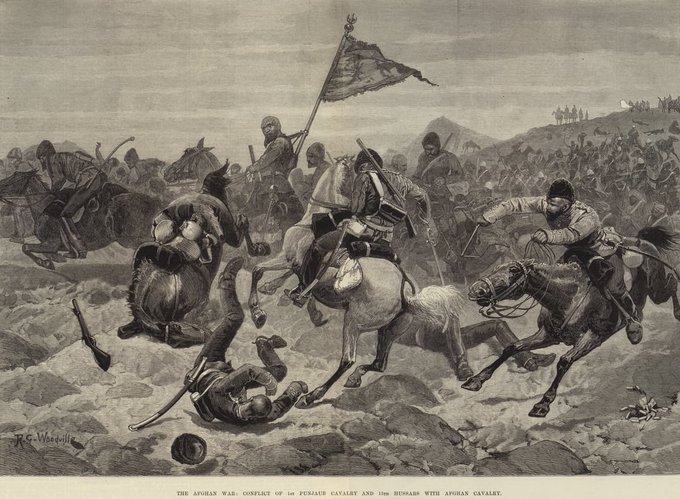Tipu Sultan charging the British lines at the head of Haider Ali's cavalry.
Drawn by Richard Caton Woodville in 1897, published in London Illustrated News.
https://t.co/w4P5CJSXs3
Conflict of Afghan cavalry with the cavalry of British-Indian army, 1879. Second Anglo-Afghan War.
Illustration for The Illustrated London News, 7 June 1879.
Artist: Richard Caton Woodville junior.
https://t.co/PJJpJZ7lMS
The 4th Gurkhas of British-Indian army marching through the Bazaar of Jalalabad city, Afghanistan, 1879. Second Anglo-Afghan War.
By William Heysham Overend.
From 'London Illustrated News', February 8th, 1879.
https://t.co/rph7CQSBt4
A group of Baloch irregular cavalry, allied to the British during the Indian war of Independence (1857).
Pen and ink and watercolour by John North Crealock.
Original caption: 'Our allies'; 'the "Beloochees" who joined us before Kotah', India, 1858
https://t.co/UQydYfuZjc
The war flags of Umra Khan and Sar-tor faqir had insignia of blood-red hands.
The blood-red hand also appears on the flag of Afridis who were making peace offerings to a British officer in 1930.
No idea what the blood-red hand signified. I might figure it out one-day. Inshallah












